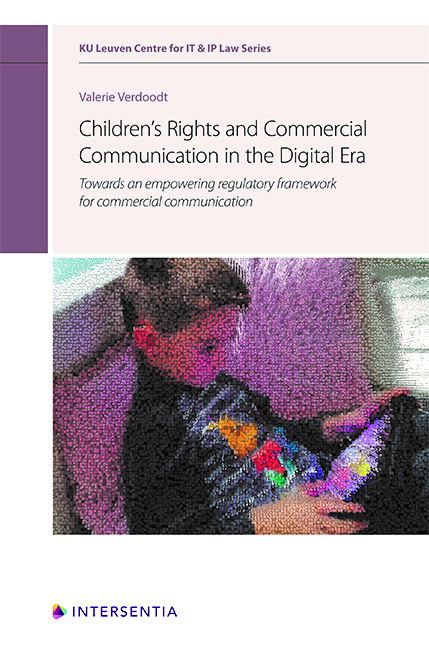 Children's Rights and Commercial Communication in the Digital Era
Children's Rights and Commercial Communication in the Digital Era Book contents
- Frontmatter
- Preface
- Contents
- Abbreviations
- Introduction
- PART I CHILDREN'S RIGHTS AND ADVERTISING LITERACY IN THE DIGITAL ERA
- PART II ASSESSMENT OF THE REGULATORY FRAMEWORK FOR COMMERCIAL COMMUNICATION IN LIGHT OF CHILDREN'S RIGHTS
- PART III ASSESSMENT OF NATIONAL ARIS IN THE AREA OF COMMERCIAL COMMUNICATION
- CONCLUDING REMARKS AND RECOMMENDATIONS FOR THE FUTURE
- Bibliography
- Miscellaneous Endmatter
- Frontmatter
- Preface
- Contents
- Abbreviations
- Introduction
- PART I CHILDREN'S RIGHTS AND ADVERTISING LITERACY IN THE DIGITAL ERA
- PART II ASSESSMENT OF THE REGULATORY FRAMEWORK FOR COMMERCIAL COMMUNICATION IN LIGHT OF CHILDREN'S RIGHTS
- PART III ASSESSMENT OF NATIONAL ARIS IN THE AREA OF COMMERCIAL COMMUNICATION
- CONCLUDING REMARKS AND RECOMMENDATIONS FOR THE FUTURE
- Bibliography
- Miscellaneous Endmatter
Summary
BACKGROUND
CHILDREN'S ADVERTISING LITERACY IN THE DIGITAL ERA. Nowadays, children grow up in a commercialised environment, where they are confronted with advertising and marketing on a daily basis. From a very young age, they already display a level of brand consciousness, even starting from the age of 2 years old. Children are an attractive target group for advertisers, as they not only represent the primary market (i.e. they can purchase products or services with their weekly allowance), but also the secondary market (i.e. influence on their parents’ purchasing behaviour) and even the so-called future market (i.e. themselves as adults with full commercial decision-making capacities). The digital advertising industry plays an important role in the creation and maintenance of good-quality content and digital platforms for children and, as such, offers opportunities for children's participation and empowerment. At the moment, the dominant business model for online services is still advertising-based. Rather than paying for services online, users’ personal data are collected in exchange and commercial communications form part of the digital environments in which children play, communicate and search for information. For instance, children play entertaining advergames online, they transform the pictures and videos they send as snaps to their friends with sponsored filters, they participate in challenges launched by brands (e.g. the ‘Oreo challenge’) and upload TikTok (formerly known as musical.ly) clips of brand songs or containing a certain product. The persuasive tactics employed by the advertising industry become ever more sophisticated with the lines between commercial messages and non-commercial content being increasingly blurred. Furthermore, due to technological developments and advanced computational capacities, children are being tracked online and their personal data are used for advertising purposes. Indeed, in addition to the apparent privacy and data protection concerns associated with such behaviour monitoring, there are also clear issues with the insights such monitoring gives commercial operators regarding the increased capacity to tailor commercial offerings to individual children's interests. More specifically, commercial communications are more and more targeted at specific individuals, including children, who have been profiled as potentially interested in or receptive to the products or services that are promoted. In other words, the advertising techniques used in the digital environment raise significant issues vis-à-vis children's advertising literacy.
- Type
- Chapter
- Information
- Children's Rights and Commercial Communication in the Digital EraTowards an Empowering Regulatory Framework for Commercial Communication, pp. 1 - 8Publisher: IntersentiaPrint publication year: 2020


